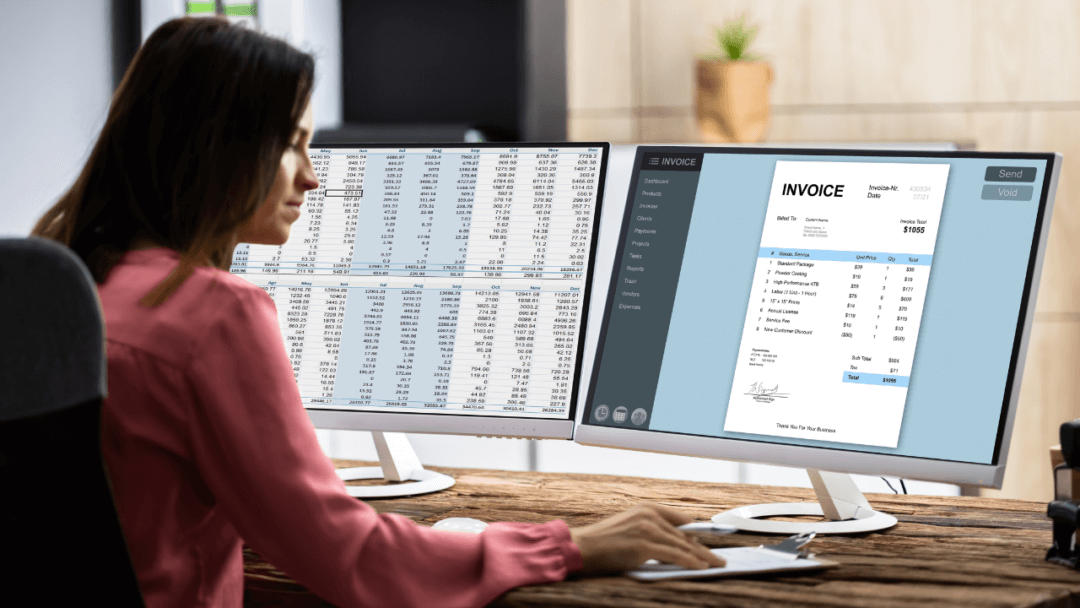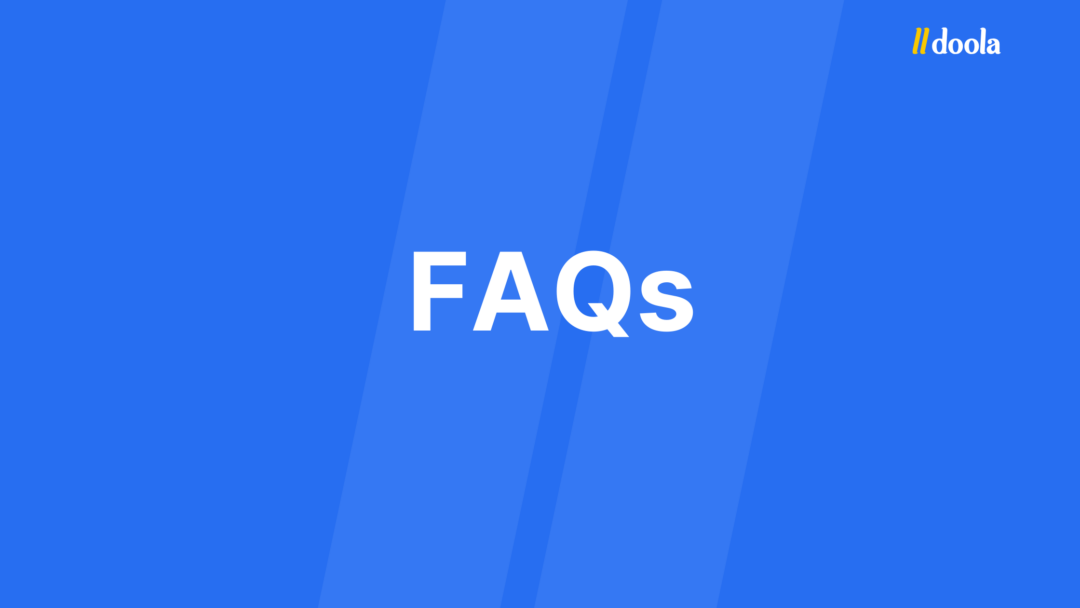Language:
2024 Ecommerce Accounting Guide: Maximizing Profit for DTC & Shopify Businesses

As the ecommerce world continues to expand, fueled by platforms like Shopify, Etsy, and Amazon, financial accuracy becomes vital for both emerging brands and established entrepreneurs.
This guide unpacks the essentials of ecommerce accounting with tips and best practices to maximize profits and streamline finances.
Along the way, we’ll also cover how doola’s reliable bookkeeping solutions keep your financials clear so you can focus on growth.
Let’s doola it!
Section 1: Types of Ecommerce Accounting

What Is Ecommerce Accounting?
Ecommerce accounting is the structured process of recording, organizing, and analyzing financial transactions unique to online retail.
This includes:
- Tracking sales
- Managing returns
- Calculating the cost of goods sold (COGS)
- Monitoring inventory
- Generating key financial reports
For direct-to-consumer (DTC) businesses, ecommerce accounting is crucial for evaluating profitability, optimizing cash flow, and enabling informed financial decision-making that drives growth and sustainability.
Accounting Methods: 2 Main Types
Ecommerce Accounting Method 1 – Cash Basis
In cash-basis accounting, transactions are recorded only when cash is received or paid out, making it a simpler approach often favored by small businesses.
This method offers straightforward bookkeeping with immediate insight into available cash.
Ecommerce Accounting Method 2 – Accrual
Accrual accounting, the more common method for ecommerce, records revenue and expenses when they are incurred, not when cash is exchanged.
This method offers a more comprehensive view of financial health, helping ecommerce owners anticipate future income and expenses, enabling smarter planning and growth.
3 Main Types of Financial Reports for Ecommerce Accounting
Profit and Loss (P&L)
The P&L statement shows revenue, expenses, and profit over a specified period. It’s a vital tool for assessing profitability and uncovering opportunities for cost savings or strategic investments.
Balance Sheet
The balance sheet captures a business’s assets, liabilities, and equity at a specific point in time. This report is essential for gauging financial stability and determining if the business is equipped to meet its obligations.
Cash Flow Statement
The cash flow statement tracks cash inflows and outflows, providing a clear view of liquidity. It’s key for managing cash reserves, budgeting, and making investment decisions.

Cash Flow Statement: A Detailed Break Down
The net cash flow for the period show in the table above is $19,000, indicating a positive cash position after factoring in operational income, investment expenses, and financing activities.
Section 2: Ecommerce Accounting Tasks

Let’s take a look at a complete checklist of ecommerce accounting tasks you need to tick off for your business to thrive in the competitive market.
A Checklist of Ecommerce Accounting Tasks You Need to do
Staying on top of your finances is key to ecommerce success.
Use this checklist to ensure accuracy and accountability in your accounting:
- Daily: Log sales, update inventory, and monitor cash flow.
- Weekly: Reconcile bank accounts, track outstanding invoices, and manage payroll.
- Monthly: Review financial statements, adjust inventory levels, and analyze profits.
- Quarterly: File estimated taxes, assess quarterly earnings, and update budgets.
- Annually: Complete year-end reports, file taxes, and set financial goals for the next year.
With these steps, you’ll keep your finances streamlined and ready for growth.
Understanding “Money In” for eCommerce Businesses
✔️ Gross Sales vs. Net Sales
Gross sales refer to total sales before any deductions, while net sales account for refunds, discounts, and chargebacks. Knowing the difference helps in analyzing actual revenue.
✔️ Handling Returns and Chargebacks
Returns and chargebacks should be recorded as deductions from sales, not expenses. This approach ensures an accurate reflection of net revenue.
✔️ Gross Profit
Gross profit, calculated as sales minus COGS, provides a snapshot of profitability before operational expenses.
✔️ Net Operating Profit
Net operating profit equals gross profit minus operating expenses. It indicates profitability from core business operations.
✔️ Net Profit (Bottom Line)
Net profit represents total profitability after all expenses and taxes, showing the actual profit retained by your business.
Understanding these metrics provides a solid foundation for assessing financial health and making informed decisions.
Understanding “Money Out”: Variable vs. Fixed Costs
1. Variable Costs (COGS)
COGS includes the cost of raw materials, production, and shipping. Keeping these costs in check is critical to maintain profitability.
2. Fixed Costs (Operating Expenses)
Fixed costs include rent, salaries, and other expenses that don’t change with sales volume. Tracking fixed costs helps maintain consistent expense management and forecast long-term stability.
Mastering the balance between variable and fixed costs provides ecommerce businesses with the insights they need to boost profitability and sustain growth.

Specific Expense Categories

Inventory Purchases vs. Landed Costs
Inventory purchases cover the cost of stock, while landed costs include extra charges like shipping, customs, and warehousing fees. Distinguishing these helps in better cost allocation and pricing.
Shipping and Fulfillment
These include all logistics expenses for delivering products to customers. Managing shipping expenses can notably impact your bottom line.
Merchant and Processing Fees
Fees from payment processors add up fast. Accurate tracking of these costs ensures precise records and better cost control.
Operating Expenses
Here’s a complete breakdown of key operating expenses.
- General & Administrative (G&A): Software, rent, utilities.
- Salaries & Wages: Employee pay.
- Advertising & Marketing: Ad spend, content creation, email campaigns.
- Research & Development (R&D): Investment in developing new products.
Having a clear view of these expenses empowers ecommerce entrepreneurs to optimize spending, boost profitability, and make informed financial decisions.
Ecommerce Sales Tax Compliance
Navigating sales tax compliance is essential for ecommerce success, especially with constantly evolving nexus laws.
Your sales tax obligations depend on both your business location and your customers’ locations, making it crucial to stay updated.
While platforms like Shopify for businesses and Amazon offer automated tools for calculating and collecting sales tax, it’s still up to business owners to ensure full compliance across all selling channels.
Staying proactive in managing sales tax can help avoid penalties and keep your business running smoothly.
Section 3: Top Ecommerce Accounting Software and Tools

In this section, we will cover the top 6 ecommerce accounting software and tools recommended my successful entrepreneurs worldwide.
1. doola Bookkeeping
With doola’s affordable bookkeeping services, you’re not just investing in software — you’re partnering with a financial expert committed to streamlining your books and boosting your profitability.
Pricing:
Starts at $25/month (*T&C Apply).
*Terms & Conditions: For additional services other than bookkeeping and accounting software, the pricing tiers vary.
Check out doola’s services and pricing.
Features:
- Full-service bookkeeping
- LLC formation,
- Tax support,
- Sales tax compliance
- Dedicated bookkeeping for ecommerce-specific needs
2. QuickBooks Online
QuickBooks delivers essential bookkeeping tools for small to mid-sized ecommerce businesses, but it falls short of the tailored support and expertise that doola offers.
Pricing:
Starts at $35/month.
Features:
- Invoice management
- Expense tracking
- Payroll integration
- Inventory management.
3. Xero
Xero offers flexibility with its integrations, but it doesn’t quite match the ecommerce-focused expertise and comprehensive support that doola provides.
Pricing:
Starts at $13/month.
Features:
- Bank reconciliation
- Inventory tracking
- Financial reporting
- Payroll support
4. Bench
Bench, a hands-off bookkeeping solution, is tailored to small businesses. However, if you’re a beginner, it may not help with the ecommerce-specific insights and scalability that doola excels at.
Pricing:
Starts at $299/month.
Features:
- Human-assisted bookkeeping
- Tax-ready financials
- Monthly reports
5. FreshBooks
FreshBooks simplifies invoicing and expense tracking, making it a solid option for basic needs. However, it lacks the robust, ecommerce-focused features that set doola apart.
Pricing:
Starts at $15/month.
Features:
- Time tracking
- Expense tracking
- Invoicing
- Automated payments
6. Wave
Wave is a great free option for startups and small businesses looking to manage basic accounting tasks.
However, for ecommerce businesses seeking tailored support and advanced features, doola offers a more comprehensive solution.
Pricing:
Free for basic accounting.
Features:
- Free invoicing
- Income and expense tracking
- Receipt scanning
Next Step: Level up Ecommerce Accounting With doola

To truly elevate your ecommerce business, maximize profits, and keep your venture thriving, partner with doola for seamless bookkeeping that’s tailored for DTC brands.
With doola Bookkeeping, you gain financial insights, tax compliance, and expert support — all essential for scaling your online store.
Book a demo with doola today and experience the impact of stress-free ecommerce accounting!
Ecommerce Accounting FAQs

1. What’s the difference between bookkeeping and accounting for ecommerce businesses?
Bookkeeping focuses on recording and organizing daily transactions, while accounting involves analyzing and interpreting that data to make financial decisions.
Both are essential for DTC businesses to maintain accurate financial records and optimize profitability.
2. How should I handle sales tax for an ecommerce business?
Sales tax obligations depend on nexus laws. Automated tools or professional services simplify compliance.
3. What’s included in the cost of goods sold (COGS) for DTC brands?
COGS for DTC businesses typically includes the costs of raw materials, manufacturing, packaging, and shipping to customers. It’s crucial to accurately track COGS for understanding profitability and tax reporting.
4. Should I track inventory as part of my accounting?
Yes, you should. Inventory tracking helps monitor stock levels, calculate COGS, and determine profitability.
5. What’s the best accounting method for ecommerce businesses: cash or accrual?
The accrual method provides a clearer financial picture, as it records income and expenses when they are incurred.
6. How do I account for refunds and chargebacks?
Record refunds and chargebacks as deductions in sales rather than as expenses to maintain accurate net sales.
7. How often should I reconcile my accounts?
Monthly reconciliation ensures accuracy by matching records with bank and platform statements.
8. What financial reports should DTC business owners focus on?
DTC brands should prioritize the P&L statement, balance sheet, and cash flow statement for a comprehensive financial overview.
9. How can accounting help me improve profitability?
Regular accounting allows you to assess key metrics and find ways to cut costs, optimize pricing, and allocate resources.
10. Do I need to hire an accountant for my ecommerce business?
Ideally, you should. While small businesses may use software initially, hiring an accountant provides deeper insights, tax expertise, and growth support.







